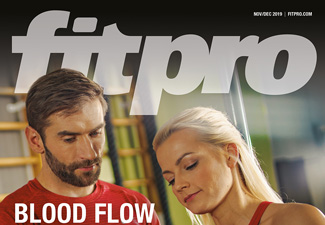Magazine References
Nov – Dec 2019

Pg 08-11
References
- https://www.ncbi.nlm.nih.gov/pubmed/10642363.
- https://www.ncbi.nlm.nih.gov/pubmed/22802591.
- https://link.springer.com/article/10.1007/s00380-016-0801-6
- http://www.bfr-training.co.uk/wp-content/uploads/2015/07/Use-and-Safety-of-KAATSU- Training-Results-of-a-National-Survey.pdf
- https://www.ncbi.nlm.nih.gov/pubmed/26118847.
- http://journals.plos.org/plosone/article?id=10.1371/journal.pone.0052843.
- https://link.springer.com/article/10.1007%2Fs00421-001-0561-5
- https://www.ncbi.nlm.nih.gov/pubmed/25114743
- https://www.ncbi.nlm.nih.gov/pubmed/26202071.
- https://www.ncbi.nlm.nih.gov/pubmed/10846023.
- https://extremephysiolmed.biomedcentral.com/articles/10.1186/2046-7648-1-12.
- https://www.ncbi.nlm.nih.gov/pubmed/11128848.
- https://www.ncbi.nlm.nih.gov/pubmed/25264670.
- https://www.ncbi.nlm.nih.gov/pubmed/22982712.
- https://www.ncbi.nlm.nih.gov/pubmed/26118847.
- Luke Hughes & Stephen Patterson (2019). Low intensity blood flow restriction exercise: Rationale for a hypoalgesia effect. Medical Hypotheses. Volume 132, November 2019,
- Danny Christiansen et al. (2019). Cycling with blood flow restriction improves performance and muscle K+ regulation and alters the effect of anti‐oxidant infusion in humans. Journal of Physiology. Volume 597, Issue 9.
- Stephen D. Patterson et al. (2019). Blood Flow Restriction Exercise Position Stand: Considerations of Methodology, Application, and Safety. Front Physiol. 2019; 10: 533.
Pg 12-15
References
- Baltgalvis, K.A., Greising, S.M., Warren, G.L., Lowe, D.A. (2010) Oestrogen regulates oestrogen receptors and antioxidant gene expression in mouse skeletal muscle, PloS one, 13;5(4):e10164.
- Bell, D.R., Myrick, M.P., Blackburn, J.T., Shultz, S.J., Guskiewicz, K.M., Padua, D.A. (2009) The effect of menstrual-cycle phase on hamstring extensibility and muscle stiffness, Journal of Sport Rehabilitation, 18(4):5.
- Bell, D.R., Blackburn, J.T., Ondrak, K.S., Hackney, A.C., Hudson, J.D., Norcross, M.F. and Padua, D.A. (2011) The effects of oral contraceptive use on muscle stiffness across the menstrual cycle, Clinical Journal of Sport Medicine, 21(6), 467-473.
- Burgess, K.E., Pearson, S.J., Onambélé, G.L. (2010) Patellar tendon properties with fluctuating menstrual cycle hormones, The Journal of Strength and Conditioning Research, 24(8):2088-2095.
- Chidi-Ogbolu, N., Baar, K. (2018) Effect of oestrogen on musculoskeletal performance and injury risk, Frontiers in Physiology, 9.
- Cormie, P., McGuigan, M.R., Newton, R.U. (2011) Developing maximal neuromuscular power, Sports Medicine, 41(1):17-38.
- Davidsen, L., Vistisen, B., Astrup, A. (2007) Impact of the menstrual cycle on determinants of energy balance: a putative role in weight loss attempts, International Journal of Obesity, 31(12):1777.
- Eiling, E., Bryant, A.L., Petersen, W., Murphy, A., Hohmann, E. (2007) Effects of menstrual- cycle hormone fluctuations on musculotendinous stiffness and knee joint laxity, Knee Surgery, Sports Traumatology, Arthroscopy, 15(2):126-132.
- Ekenros, L. The influence of sex hormones on neuromuscular function and premenstrual symptoms.
- Enns, D.L., Tiidus, P.M. (2010) The influence of oestrogen on skeletal muscle, Sports Medicine, 40(1):41-58.
- Frizziero, A., Vittadini, F., Gasparre, G., and Masiero, S. (2014) Impact of ooestrogen deficiency and aging on tendon: concise review, Muscles, Ligaments and Tendons Journal, 4(3): 324.
- Frontera, W.R, Ochala J. (2015) Skeletal muscle: a brief review of structure and function, Calcified Tissue International, 96(3):183-195.
- Gordon, D., Hughes, F., Young, K., Scruton, A., Keiller, D., Caddy, O., Baker, J., Barnes, R. (2013) The effects of menstrual cycle phase on the development of peak torque under isokinetic conditions, Isokinetics and Exercise Science, 21(4):285-291.
- Granata, K.P., Wilson, S.E., Padua, D.A. (2002) Gender differences in active musculoskeletal stiffness. Part I.: Quantification in controlled measurements of knee joint dynamics, Journal of Electromyography and Kinesiology, 12(2):119-126.
- Granata, K.P., Padua, D.A., Wilson, S.E. (2002) Gender differences in active musculoskeletal stiffness. Part II. Quantification of leg stiffness during functional hopping tasks, Journal of Electromyography and Kinesiology, 12(2):127-135.
- Greising, S.M., Baltgalvis, K.A., Lowe, D.A., Warren, G.L. (2009) Hormone therapy and skeletal muscle strength: a meta-analysis, Journals of Gerontology Series A: Biomedical Sciences and Medical Sciences, 64(10):1071-1081.
- Haff, G.G., Nimphius, S. (2012) Training principles for power, Strength and Conditioning Journal, 34(6):2-12.
- Haff, G.G., Triplett, N.T., editors. (2015) Essentials of Strength Training and Conditioning 4th Edition, Human Kinetics.
- Hooper, A.E., Bryan, A.D., Eaton, M. (2011) Menstrual cycle effects on perceived exertion and pain during exercise among sedentary women, Journal of Women’s Health, 20(3):439- 446
- Hubal, M.J., Gordish-Dressman, H.E., Thompson, P.D., Price, T.B., Hoffman, E.P., Angelopoulos, T.J., Gordon, P.M., Moyna, N.M., Pescatello, L.S., Visich, P.S., Zoeller, R.F. (2005) Variability in muscle size and strength gain after unilateral resistance training, Medicine and Science in Sports and Exercise, 37(6):964-972.
- Hunter, S.K. (2016) The relevance of sex differences in performance fatigability. Medicine and Science in Sports and Exercise, 48(11):2247.
- Jones, E.J., Bishop, P.A., Woods, A.K., Green, J.M. (2008) Cross-sectional area and muscular strength, Sports Medicine, 38(12):987-994.
- Karacan, S., Çolakoğlu, F.F., Ersöz, G. Menstrual status differences of elite Turkish female athletes from various team sports.
- Krivickas, L.S., Dorer, D.J., Ochala, J., Frontera, W.R. (2011) Relationship between force and size in human single muscle fibres, Experimental Physiology, 96(5):539-547.
- Lowe, D.A., Baltgalvis, K.A., Greising, S.M. (2010) Mechanisms behind oestrogens’ beneficial effect on muscle strength in females, Exercise and Sport Sciences Reviews, 38(2):61.
- Maffiuletti, N.A., Aagaard, P., Blazevich, A.J., Folland, J., Tillin, N., Duchateau, J. (2016) Rate of force development: physiological and methodological considerations, European Journal of Applied Physiology, 116(6):1091-1116.
- Malone, S., Hughes, B., Doran, D.A., Collins, K., Gabbett, T.J. (2019) Can the workload-injury relationship be moderated by improved strength, speed and repeated-sprint qualities?, Journal of Science and Medicine in Sport, 22(1):29-34.
- McClung, J.M., Davis, J.M., Wilson, M.A., Goldsmith, E.C., Carson, J.A. (2006) Oestrogen status and skeletal muscle recovery from disuse atrophy, Journal of Applied Physiology, 100(6):2012-2023.
- Mountjoy, M., Sundgot-Borgen, J., Burke, L., Carter, S., Constantini, N., Lebrun, C., Meyer, N., Sherman, R., Steffen, K., Budgett, R., Ljungqvist, A. (2014) The IOC consensus statement: beyond the female athlete triad—Relative Energy Deficiency in Sport (RED-S), Br J Sports Med, 48(7):491-497.
- Mountjoy, M., Sundgot-Borgen, J.K., Burke, L.M., Ackerman, K.E., Blauwet, C., Constantini, N., Lebrun, C., Lundy, B., Melin, A.K., Meyer, N.L., Sherman, R.T. (2018) IOC consensus statement on relative energy deficiency in sport (RED-S), Br J Sports Med.
- Oosthuyse, T., Bosch, A.N. (2010) The effect of the menstrual cycle on exercise metabolism. Sports Medicine, 40(3):207-227.
- Phillips, S.M. (2014) A brief review of critical processes in exercise-induced muscular hypertrophy, Sports Medicine, 44(1):71-77.
- Reilly, T. (2000) The menstrual cycle and human performance: an overview, Biological Rhythm Research, 31(1):29-40.
- Schoenfeld, B.J., Ogborn, D., Krieger, J.W. (2017) Dose-response relationship between weekly resistance training volume and increases in muscle mass: A systematic review and meta-analysis, Journal of Sports Sciences, 35(11):1073-1082.
- Schoenfeld, B.J., Ogborn, D., Krieger, J.W. (2016) Effects of resistance training frequency on measures of muscle hypertrophy: a systematic review and meta-analysis, Sports Medicine, 46(11):1689-1697.
- Schoenfeld, B.J. (2013) Potential mechanisms for a role of metabolic stress in hypertrophic adaptations to resistance training, Sports Medicine, 43(3):179-194.
- Sherman, J.J., LeResche, L. (2006) Does experimental pain response vary across the menstrual cycle? A methodological review, American Journal of Physiology-Regulatory, Integrative and Comparative Physiology, 291(2):R245-256.
- Shultz, S.J., Sander, T.C., Kirk, S.E., Perrin, D.H. (2005) Sex differences in knee joint laxity change across the female menstrual cycle, The Journal of Sports Medicine and Physical Fitness, 45(4):594.
- Sipavičienė, S., Daniusevičiutė, L., Klizienė, I., Kamandulis, S., Skurvydas, A. (2013) Effects of oestrogen fluctuation during the menstrual cycle on the response to stretch-shortening exercise in females, BioMed Research International.
- Sipilä, S., Finni,T., Kovanen, V. (2015) Oestrogen influences on neuromuscular function in postmenopausal women, Calcified Tissue International, 96(3):222-233.
- Spangenburg, E.E., Geiger, P.C., Leinwand, L.A., Lowe, D.A. (2012) Regulation of physiological and metabolic function of muscle by female sex steroids, Medicine and Science in Sports and Exercise, 44(9):1653.
- Suchomel, T.J., Nimphius, S., Stone, M.H. (2016) The importance of muscular strength in athletic performance, Sports Medicine, 46(10):1419-1449.
- Suchomel, T.J., Nimphius, S., Bellon, C.R., Stone, M.H. (2018) The importance of muscular strength: training considerations, Sports Medicine, 48(4):765-785.
- Takeda, T., Imoto, Y., Nagasawa, H., Muroya, M., Shiina, M. (2015) Premenstrual syndrome and premenstrual dysphoric disorder in Japanese collegiate athletes. Journal of Pediatric and Adolescent Gynecology, 28(4):215-218.
- Tiidus, P.M., Lowe, D.A., Brown, M. (2013) Oestrogen replacement and skeletal muscle: mechanisms and population health, Journal of Applied Physiology, 115(5):569-578.
- Tiidus, P.M. (2011) Influence of oestrogen on muscle plasticity, Brazilian Journal of Biomotricity, 5(3):143-155.
- Tiidus, P.M. (2003) Influence of oestrogen on skeletal muscle damage, inflammation, and repair, Exercise and Sport Sciences Reviews, 31(1):40-44.
- Veldhuijzen, D.S., Keaser, M.L., Traub, D.S., Zhuo, J., Gullapalli, R.P., Greenspan, J.D. (2013) The role of circulating sex hormones in menstrual cycle-dependent modulation of pain- related brain activation, Pain, 154(4):548-559.
- Vescovi, J.D. (2011) The menstrual cycle and anterior cruciate ligament injury risk, Sports Medicine, 41(2):91-101.
- Wiik, A., Ekman, M., Morgan, G., Johansson, O., Jansson, E., Esbjörnsson, M. (2005) Oestrogen receptor β is present in both muscle fibres and endothelial cells within human skeletal muscle tissue, Histochemistry and Cell Biology, 124(2):161-165.
- Wikström-Frisén, L., Boraxbekk, C. J. Henriksson-Larsén, K. (2017) Effects on power, strength and lean body mass of menstrual/oral contraceptive cycle based resistance training, Journal of Sports Medicine and Physical Fitness, 57(1-2):43-52.
- Wilson, J.M., Flanagan, E.P. (2008) The role of elastic energy in activities with high force and power requirements: a brief review, The Journal of Strength and Conditioning Research, 22(5):1705-1715.
Pg 20-21
References
- gov.uk/government/news/lets-talk-loneliness-campaign-launched-to-tackle-stigma-of-feeling-alone
- ageuk.org.uk/our-impact/policy-research/loneliness-research-and-resources/
Pg 22-23
References
Pg 24-26
References
- Vinstrup et al 2015.
Pg 32-33
References
- Carbohydates Fact Sheet, British Dietetic Association, bda.uk.com/foodfacts/Carbs.pdf.
- Slavin et al. (2014) Carbohydrates, Advances in Nutrition, 760-761.
- Ludwig et al. (2019) Dietary carbohydrates: Role of quality and quantity in chronic disease, British Medical Journal, 361.
- Paoli, A. et al. (2019) Ketogenic Diet and Skeletal Muscle Hypertrophy: A Frenemy Relationship?, J Hum Kinet, 68:233-247.
- Bueno, et al. (2013) Very-low-carbohydrate ketogenic diet v. low-fat diet for long-term weight loss: a meta-analysis of randomised controlled trials, Br J Nutr, 110(7):1178-1187.


